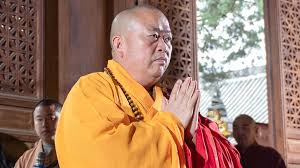Why is Good Friday not a holiday in Italy?

Priest Don Kresimir Busic (C) holding a crucifix, goes in procession along with Don Giuseppe Arnaudo (L) on April 10, 2020 in Manta, near Cuneo, northwestern Italy, as part of a Good Friday's Way of the Cross (Via Crucis) procession, during the country's lockdown aimed at curbing the spread of the COVID-19 infection, caused by the novel coronavirus. (Photo by MARCO BERTORELLO / AFP)
Rome: As Italy is known for observing a generous number of religious days, it’s curious that Good Friday isn’t included in the holiday calendar. Here’s why you don’t get a day off before the Easter weekend.
There are a total of 11 national public holidays a year in Italy – and that’s not including feast days for local patron saints.
So it seems bizarre that Good Friday would be excluded from the list, especially when it’s a day off even in non-Catholic countries including the UK, Germany and Sweden.
The key word here is ‘celebrate’. You don’t get a day off because it’s not a celebration: instead it’s a day of mourning, marking the day that Christians believe Jesus died on the cross.
It’s known as Venerdì Santo in Italy, or Holy Friday. The country’s Catholic faithful spend it in sombre mood, with many churches cloaking statues in black, purple or dark red covers.
The day is part of Holy Week, which starts the Sunday before Easter Sunday. It’s preceded by Giovedì Santo, Maundy Thursday, which sees the Pope wash the feet of others, just as Jesus did for his disciples.
But Good Friday is a much quieter affair, with no masses held and some people in Italy observe a fast in repentance of sins.
Processions usually take place up and down the country, with the most famous of those in Rome. The Via Crucis, the ‘Way of the Cross’, attracts tens of thousands of tourists and pilgrims, who watch the Pope lead a torchlit procession through the capital.
The Pope carries a cross around all 14 Stations of the Cross, saying a prayer at each one. The event culminates in lighting a cross made of candles, which is then carried to the ancient Colosseum.
Of course, this year – like in 2020 – processions will be limited and distanced to respect Covid-19 rules, with the Via Crucis taking place entirely within St Peter’s Square and watched only by a few dozen guests.
Religious processions would normally held throughout Italy, including in Sicily, which commonly sees thousands of people parade through the streets dressed in historical costumes, carrying sacred statues and playing traditional music.
Several towns have their own ways of marking the day, many of them heavily influenced by Spanish customs from the days when the island was under Spain’s rule.
One of the oldest continuous Good Friday events in Italy is the Processione del Cristo Morto – the procession of the dead Christ – in Chieti, Abruzzo.
During this spectacle, which dates back to the ninth century, onlookers get the opportunity to hear 100 violins play Miserere by the 18th-century composer and choir master Saverio Selecchy, a native of the town.
They might not be called celebrations, but there is certainly a lot of pomp and ceremony for a day not classed as a national holiday.
Even though businesses are open, you’ll find that not everything is running on Good Friday. Schools, for example close their doors until the Tuesday or Wednesday after Easter Monday.
Easter Monday, by the way, also known as Pasquetta, or ‘little Easter’, is a national holiday and a day off work for most. The liturgy has passed, the grief subsided and so the celebrations resume.





